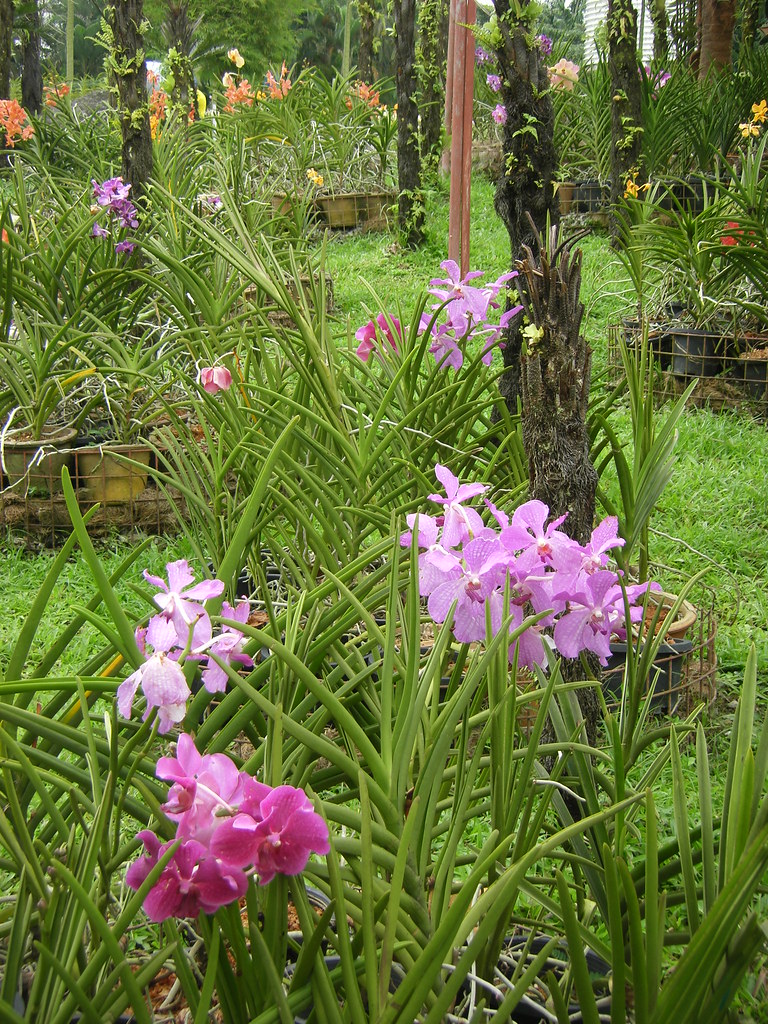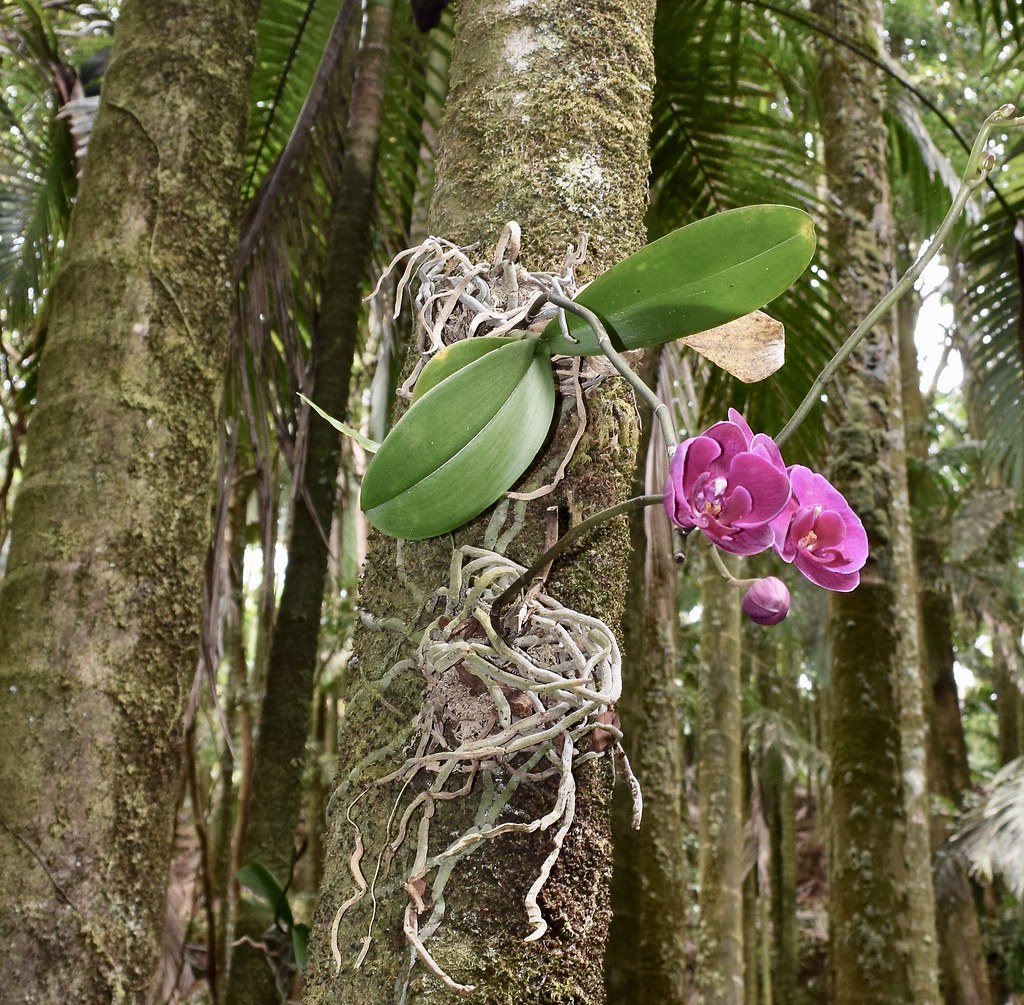
Orchid loves to thrive outside as they’re primarily tropical plant. But keeping it as a houseplant is a different consideration. There are many things to consider before placing your orchids outside. Maintenance and attention vary depending on the species you have, temperature, humidity, light, etc.
Here you will have proper guidance about placing orchids outside.
- Proper light
- Humidity
- Protection from overheating
- Air condition
- Soil condition
- Epiphytic growing
- Protection from pests
- Regular care
- Choosing right species
Proper light
Orchids need enough amount of light for 4 to 6 hours a day. But it should be in indirect sunlight. Place your orchid where it gets filtered and indirect sunlight. Try to place them near any big plant that can provide enough shade and protection.
If you can’t manage filtered sunlight in the middle of the garden try to place it somewhere in a corner or create an artificial shadow system with wood or something. Filtered sunlight is applicable for the whole day. So if there is any possibility of moving the shadow and hitting scorching sunlight directly try to do the whole process manually.
Humidity
As orchids are mainly native to the rainforest region they need a highly humid environment to thrive well. If you live in a dry region, it is best to place your orchid in a humid area where natural humidity levels are high.
There are many places near your house where the humidity level is higher than in other places. It can be near any kind of water feature such as a pond, swimming pool, fish pond, tarn, reservoir, etc. If you can’t manage any of them try to use an artificial humidifier or you can use a humidity tray but both are more applicable indoors. It will give an extra advantage to keep your orchid and other plant healthy.
Protection from overheating
As I said before orchid needs light but overexposure can cause a lot of trouble such as sunburn, heat stress, dehydration, leaf desiccation, reduced flowering, fertilizer burn, pest infestation, and disease susceptibility. Scorching heat and sunlight can burn them. If you see any unusual color change in leaves, there is a high chance it is because it happened for overexposure.
They’re sensitive to temperature extremes. Protect orchids from strong wind, frost, and overheating. If you live in occasionally colder areas, you need to bring your orchids inside during the colder season or if you live in an area with high-temperature drops at night consider bringing them inside at night.
Air condition
Orchid leaves and roots both need enough airflow to prevent fungal and bacterial diseases. Roots are always exposed to air in their natural habitat so they can take enough fresh and clean air for their growth. Don’t try to cover the whole root it may lead to root rot. If you grow orchids in a pot try using pot specialized pot for orchids.
Choose a place that can provide gentle airflow, but not strong and constant wind. Lack of air circulation can cause overheating problems and it will trap moisture around your orchid, increasing overwatering, pests, and disease problems.
Soil condition
Use well-draining soil to keep it safe from root rot which can lead to big problems initially death. So use orchid potting mix for the long term.
If you want to make the ideal orchid soil at home, follow these instructions.
Orchid bark, often made from fir or pine, is the main ingredient of orchid mix which primarily helps to create a drainage system.
Perlite, which comes from the volcano, is a lightweight mineral that enhances the drainage system.
Sphagnum Moss (optional) some orchids need moss so research which orchid species you have.
Now mix them together with a ratio of 3/5 (Orchid bark), 1.5/5 (Perlite), and 0.5/5 (Sphagnum Moss).
Epiphytic growth for outside orchids

70 to 80 percent of orchids are epiphytic which means they naturally grow in tree bark. If you think managing air, shade, soil, etc is quite a drag you can almost avoid them by growing epiphytically. This will provide them with a good airflow and drainage system. Place your orchid in tree branches or in a wood. It will have the natural environmental conditions that will keep them healthy and seasonal and they can live on their own, reducing your lot of time and attention. You can see the whole process of planting or growing orchids on the tree bark.
Protection from pests
Be careful about all kinds of pests such as Aphids, Mealybugs, Scale Insects, Spider Mites, Thrips, Whiteflies, Fungus Gnats, Root Mealybugs, Slugs and Snails, Caterpillars, Ants, and Nematodes. You can use insect killers to avoid them. Snails are a great problem, place a slice of cucumber on the orchid pot at night and remove it in the morning.
Protecting from pests is not enough. You have to be careful about diseases too. Root Rot, Insect-Transmitted Diseases, Bacterial Soft Rot, Fusarium Wilt, Fungal Leaf Spots, Bacterial Brown Spot, Botrytis Blight, Phalaenopsis Bud Blight, Black Rot, Phalaenopsis Flower Break Virus, Odontoglossum Ringspot Virus, Cymbidium Mosaic Virus, Rust, Powdery Mildew, and Virus and Virus-Like Symptoms these diseases can infect your orchid. You can use this for protection.
Regular care
Orchids need regular care and attention.
- The right amount of sunlight following the instructions above
- The normal temperature for an orchid is 15 to 27°C, providing a temperature drop at night of 5 to 8°C. Try to maintain the right temperature for better outcomes.
- Well-draining potting mix and the right pot given the instructions above.
- Orchids need very little water to thrive but the soil needs to keep moist. Water once a week in the morning.
- Fertilize your orchid with water-soluble orchid fertilizer once a month in spring and summer and reduce in the dormant period. Use bloom booster before blooming time.
Choosing right species
All types of orchids are not suitable for outside growing. Some are more cod-tolerant and suitable for indoors.
Besides, some need more light some need less light, some are more drought-tolerant than others. Their maintenance depends on the environmental conditions and species. The same orchid can behave differently in different weather. So be wise while choosing the right species.
If you want to know more about orchids. Go check them out.
